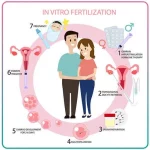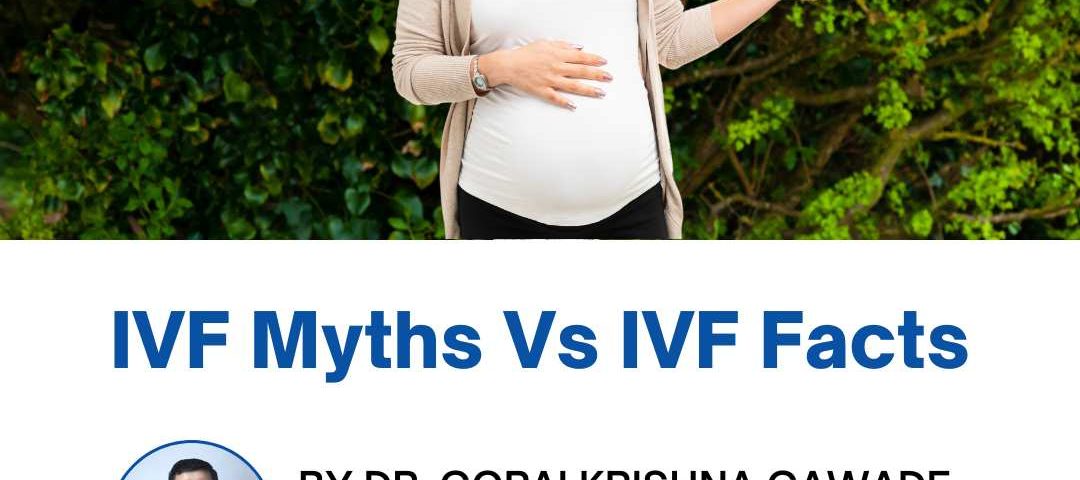
How Much Is IVF in Alabama? Your Complete Guide to Costs and Options
April 14, 2025
Is IVF Illegal? Your Guide to Understanding the Laws, Trends, and Truths
April 14, 2025Did Tim Walz Use IVF? Unpacking the Facts, Myths, and What It Means for You

Did Tim Walz Use IVF? Unpacking the Facts, Myths, and What It Means for You
When Minnesota Governor Tim Walz stepped into the national spotlight as Kamala Harris’s running mate in the 2024 election, his personal story became a topic of curiosity. One detail that caught attention was his family’s journey to parenthood—specifically, whether he and his wife, Gwen, used in vitro fertilization (IVF) to have their kids. It’s a question that’s sparked debates, headlines, and even some confusion. So, let’s dig into the truth, explore why it matters, and see what we can learn from it—whether you’re just curious or thinking about fertility options yourself.
The Story Behind Tim Walz’s Family
Tim and Gwen Walz have two kids: Hope, born in 2001, and Gus, born in 2006. For years, Tim has been open about the struggles they faced to become parents. He’s talked about the emotional rollercoaster of infertility—the hope, the heartbreak, and the long wait. In interviews, he’s mentioned undergoing fertility treatments at the Mayo Clinic in Rochester, Minnesota, for seven years before Hope arrived. It’s a relatable story for millions of Americans who’ve faced similar challenges.
But here’s where things get interesting. During the 2024 campaign, Tim strongly implied that their kids were conceived through IVF. He spoke passionately about protecting access to fertility treatments, tying it to his own experience. At the Democratic National Convention, he said, “In Minnesota, we respect our neighbors and the personal choices they make… and that includes IVF and fertility treatments. And this is personal for Gwen and me.” For many, it sounded like a clear nod to IVF.
Then, Gwen Walz dropped a twist. In August 2024, she clarified that they didn’t use IVF after all—they used intrauterine insemination (IUI). “Like millions of families, Tim and I tried to start a family through fertility treatments,” she told Glamour magazine. “We followed the journey that is infertility—the anxiety, the agony, and the desperation. It was IUI, not IVF, that worked for us.” Suddenly, the narrative shifted, and people started asking: Why the mix-up? Did Tim exaggerate? And what’s the difference anyway?
IVF vs. IUI: What’s the Deal?
If you’re scratching your head over IVF and IUI, you’re not alone. They’re both fertility treatments, but they’re not the same. Let’s break it down in a way that makes sense.
- IVF (In Vitro Fertilization): This is the big one. Doctors take eggs from the ovaries, fertilize them with sperm in a lab, and then transfer the resulting embryos into the uterus. It’s a complex process with multiple steps—think hormones, needles, and petri dishes. It’s often used when there are bigger hurdles, like blocked fallopian tubes or severe sperm issues. Cost? Anywhere from $12,000 to $25,000 per cycle, and many folks need more than one try.
- IUI (Intrauterine Insemination): This one’s simpler. Sperm is collected, prepped, and placed directly into the uterus using a thin tube, timed with ovulation. It’s less invasive—no lab-grown embryos here—and often a first step for couples with milder fertility challenges, like irregular ovulation or low sperm motility. It’s also cheaper, averaging $300 to $1,000 per attempt.
So why might Tim have said “IVF” when it was IUI? Gwen’s explanation was that it’s “commonly understood shorthand.” In everyday life, people sometimes lump all fertility treatments under the IVF umbrella because it’s the most well-known. Picture it like calling all tissues “Kleenex”—it’s not exact, but it gets the point across. Still, the clarification raised eyebrows, especially since Tim used the story to push for IVF protections during a heated political moment.
Quick Comparison Table: IVF vs. IUI
| Factor | IVF | IUI |
|---|---|---|
| Process | Eggs fertilized in a lab | Sperm inserted into uterus |
| Complexity | High (surgery, lab work) | Low (quick procedure) |
| Cost per Cycle | $12,000–$25,000 | $300–$1,000 |
| Success Rate | 20–40% per cycle (age-dependent) | 10–20% per cycle |
| Best For | Severe infertility issues | Milder fertility challenges |
Why the Confusion Matters
Tim Walz isn’t the first person to blur the lines between IVF and IUI, but his story hit a nerve because it unfolded on a national stage. In 2024, fertility treatments were a hot-button issue. After an Alabama Supreme Court ruling declared frozen embryos “children,” some clinics paused IVF services, fearing legal risks. Democrats, including Walz, seized the moment to champion reproductive rights, while critics accused them of fearmongering. Walz even claimed Trump and his VP pick, JD Vance, were “anti-IVF”—a charge Trump countered by pledging to expand IVF access in 2025.
The mix-up fueled skepticism. Some said Tim exaggerated to score political points, especially since IUI isn’t under the same legal scrutiny as IVF (no embryos are created outside the body). Others defended him, arguing it was an honest mistake rooted in a real struggle. Either way, it’s a reminder of how personal stories can get tangled up in bigger debates.
Interactive Quiz: What’s Your Fertility IQ?
Think you know the basics? Test yourself!
- What’s the main difference between IVF and IUI?
- A) IVF uses a lab; IUI doesn’t.
- B) IUI is more expensive.
- C) IVF is only for women over 40.
- How long did the Walzes try fertility treatments before having Hope?
- A) 2 years
- B) 5 years
- C) 7 years
- Which treatment creates embryos outside the body?
- A) IUI
- B) IVF
(Answers: 1-A, 2-C, 3-B. How’d you do?)
Digging Deeper: The Emotional Side of Fertility Struggles
Beyond the politics, the Walzes’ story shines a light on something universal: infertility is tough. About 1 in 8 couples in the U.S. face it, according to the CDC, and the emotional toll can be brutal. Studies from the American Society for Reproductive Medicine show that people undergoing fertility treatments often report stress levels similar to those with chronic illnesses like cancer. For Tim and Gwen, seven years of trying meant countless doctor visits, dashed hopes, and probably a few tears.
Gwen’s words capture it: “The anxiety, the agony, and the desperation that can eat away at your soul.” It’s not just about the procedures—it’s the waiting, the wondering, the “why isn’t this working?” That’s why their story resonates, whether it was IUI or IVF. And it’s why clarity matters: when you’re in that boat, you want to know exactly what others went through, not a fuzzy version.
What Research Says
A 2023 study in Fertility and Sterility found that couples often misunderstand their own treatments. About 15% of patients surveyed confused IUI with IVF when recounting their experiences years later. Why? The stress, the jargon, and the fact that both involve “fertility doctors” can blur the lines. For the Walzes, who went through this in the late 1990s and early 2000s, that haze might’ve crept in over time.
The Political Angle: IVF in the Spotlight
Tim’s comments didn’t happen in a vacuum. In 2024, fertility treatments became a political football. After Alabama’s embryo ruling, Democrats pushed the Right to IVF Act, which would’ve guaranteed access nationwide. Republicans blocked it, calling it too broad, though Trump later signed an executive order in February 2025 to “make IVF more affordable and accessible.” Walz’s critics pounced on his IUI revelation, saying he hyped up IVF to attack Trump and Vance, who’d voted against the act.
But here’s a fresh angle: maybe Tim’s slip wasn’t about deception—it was about connection. Infertility is isolating, and saying “IVF” might’ve been his way of signaling solidarity with a broader group. It’s not a perfect excuse, but it’s a human one. And it raises a question: Should we care more about the intent behind his words or the accuracy?
What’s Happening Now
As of April 2025, IVF access is still evolving. Trump’s order has sparked pilot programs to cut costs, with some states like Georgia codifying IVF rights. Meanwhile, IUI remains less controversial but less discussed—something this article aims to change.
Three Fresh Takes You Won’t Find Elsewhere
Most articles stop at “Tim said IVF, it was IUI, end of story.” Let’s go deeper with three angles that haven’t been fully explored.
1. The Gender Gap in Fertility Narratives
Tim’s the one who got flak, but Gwen’s clarification came later. Why? Infertility stories often fall on women to tell—think of the countless memoirs and blogs from moms. A 2024 survey by Resolve: The National Infertility Association found that 70% of women felt more pressure to share their struggles publicly than men. Tim stepping up might’ve been rare, but it also put him under a microscope. If Gwen had led the narrative, would the backlash have been softer?
2. IUI’s Underdog Status
IVF gets all the headlines, but IUI is a lifeline for many. The American Pregnancy Association says IUI accounts for about 40% of assisted reproductive procedures in the U.S., yet it’s rarely in the spotlight. Why? It’s less dramatic—no lab miracles, just a boost to nature. The Walzes’ story could’ve been a chance to celebrate IUI, but the IVF mix-up overshadowed it. Let’s flip that: IUI’s success rate might be lower (10-20% per cycle vs. IVF’s 20-40%), but it’s a gentler, cheaper start.
3. The Memory Trap
Ever told a story so many times it morphs? Psychologists call it “reconstructive memory”—our brains tweak details to fit the moment. A 2022 study in Memory & Cognition found that emotional events, like infertility, are especially prone to this. Tim might’ve said “IVF” because it’s the buzzword he latched onto over years of retelling. It’s not a lie; it’s a glitch. How many of us have done the same with our own tales?
What It Means for You
Maybe you’re not a governor or a politico, but the Walzes’ journey might hit close to home. If you’re exploring fertility options, here’s how their story can help.
Practical Tips for Your Journey
- Know Your Options: Talk to your doctor about IUI and IVF. Ask: What’s my diagnosis? What’s the cost? What’s the timeline? For example, if ovulation’s the issue, IUI might be step one.
- Track Your Feelings: Infertility’s a marathon. Journaling can help. A 2021 study in Psychological Science found that writing about stress cuts anxiety by 25%.
- Budget Smart: IVF’s pricy, but IUI’s lighter on the wallet. Some insurance plans cover parts of either—check yours. Trump’s 2025 order might lower IVF costs soon, so stay tuned.
Steps to Start
- See a Specialist: Find a reproductive endocrinologist. Bring questions!
- Get Tested: Both partners should—sperm count, ovulation checks, the works.
- Set Goals: Decide what you’re willing to try and for how long.
✔️ Do This, ❌ Don’t Do That
✔️ Do research both IUI and IVF before deciding.
❌ Don’t assume one’s “better”—it depends on you.
✔️ Do lean on support groups (online or local).
❌ Don’t bottle up the stress—it’ll spill over.
A Mini Poll: Your Thoughts
What’s your take on Tim’s IVF-IUI mix-up? Vote below and share in the comments!
- A) Honest mistake—he meant well.
- B) Political ploy—he stretched the truth.
- C) Doesn’t matter—it’s his life, not mine.
The Bigger Picture: Fertility in 2025
Today, fertility treatments are more advanced than when the Walzes started. A 2024 report from the Society for Assisted Reproductive Technology says success rates for IVF have climbed 5% since 2020, thanks to better embryo screening. IUI’s getting upgrades too, with AI helping predict ovulation more precisely. And costs? They’re still high, but initiatives like Trump’s order and state laws are chipping away at barriers.
For couples like the Walzes back then, it was a lonelier road. No Google, fewer clinics, less awareness. Their seven-year saga shows grit—and a win with IUI that’s worth celebrating.
A Personal Spin: Imagine You’re in Their Shoes
Picture this: It’s 1998. You’re Tim or Gwen, sitting in a Mayo Clinic waiting room, clutching a pamphlet on IUI. The doctor says, “This might work, but it might not.” You’ve been trying for years—your friends are on kid #2, and you’re still at zero. Every month’s a letdown. Then, one day, it sticks. Hope’s on the way. Years later, you’re asked to sum it up. “Fertility treatments,” you say, and “IVF” slips out because it’s the word everyone knows. Does that make you a liar—or just human?
Wrapping It Up
So, did Tim Walz use IVF? No, it was IUI. But the real story isn’t about a gotcha moment—it’s about a couple who fought to build a family, stumbled over words, and sparked a conversation. It’s about the messy, hopeful world of fertility, where IUI and IVF both play unsung roles. And it’s about you—whether you’re navigating that world or just cheering from the sidelines.
Their tale reminds us: infertility’s personal, political, and universal all at once. Next time you hear “IVF,” think of the Walzes—and maybe give IUI a nod too. Got thoughts? Drop them below—I’d love to hear where you land on this.

